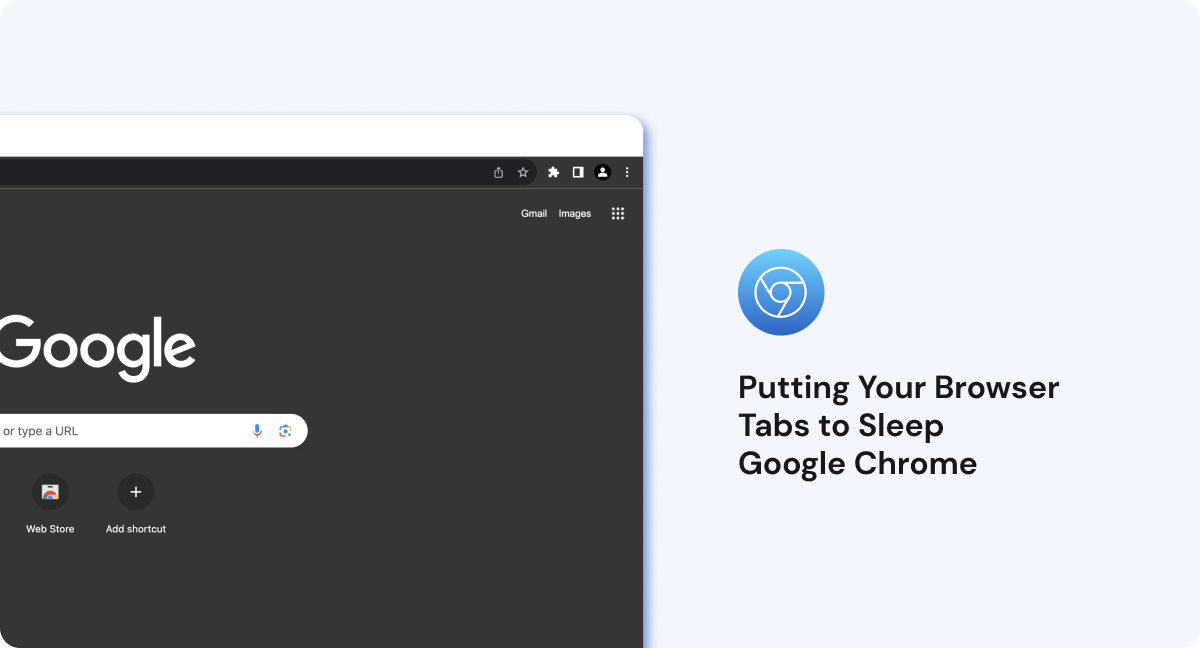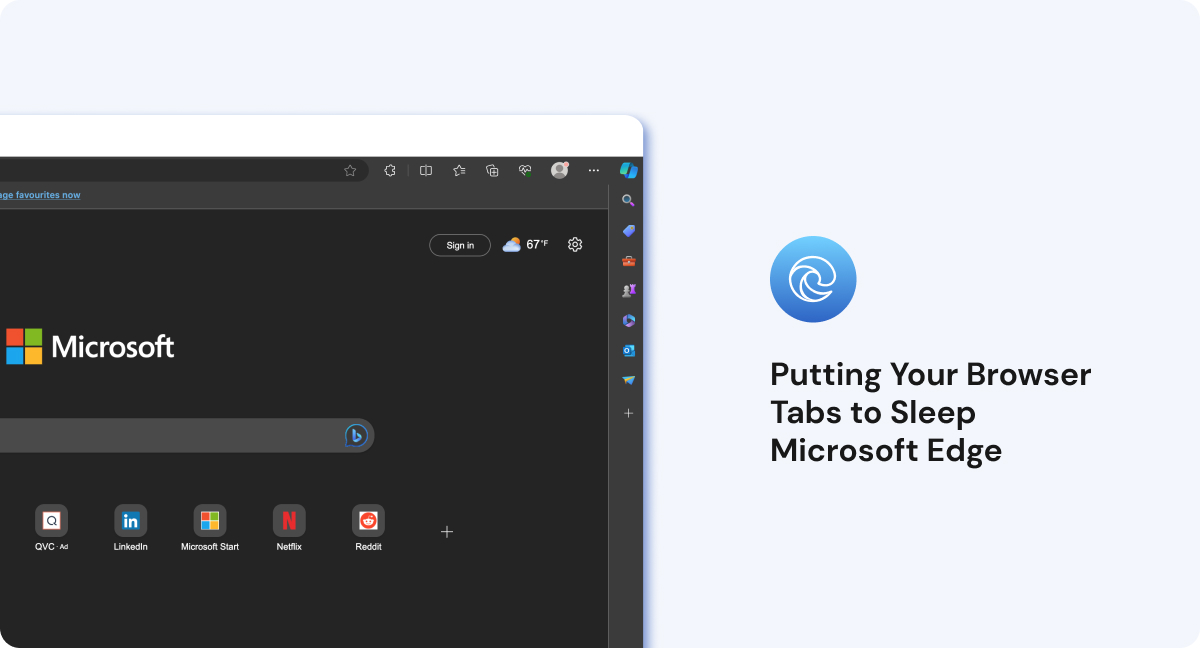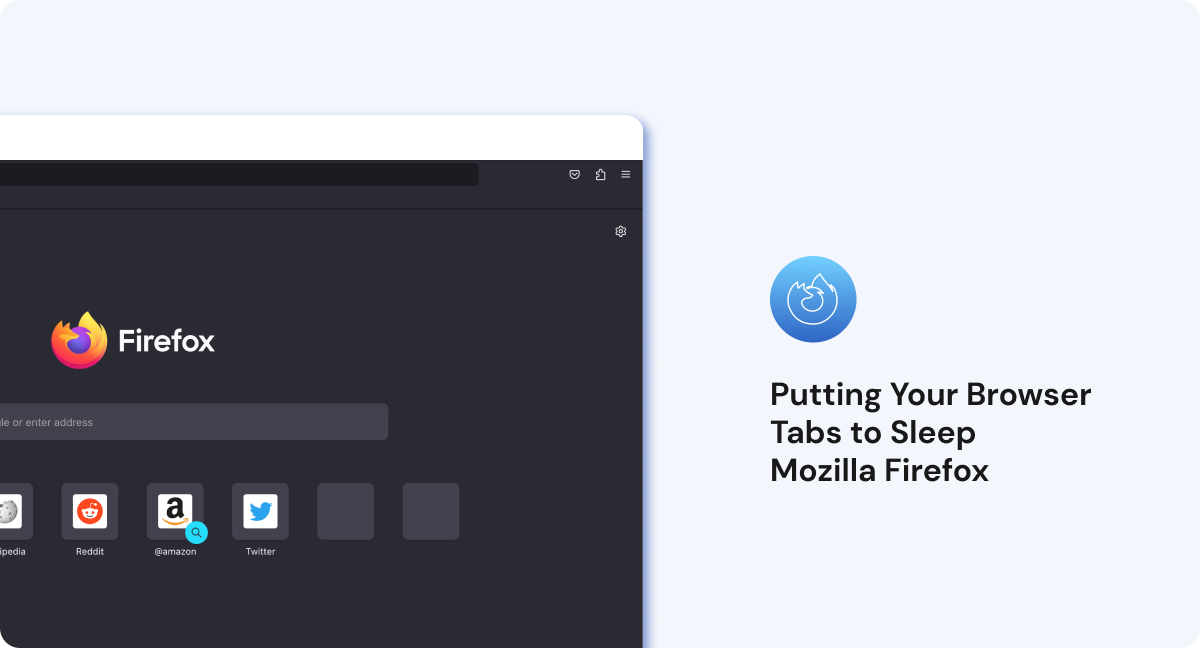How to Put Your Browser Tabs to Sleep

Nowadays, we use our web browsers for all manner of things, so it’s not uncommon to have a multitude of tabs open at any given time. However, while this can allow you to juggle multiple tasks at once, having lots of open tabs running on your browser can eat up a lot of RAM, and this can hinder the performance of your device, resulting in a worse experience.
Fortunately, there is a way to deal with this issue without having to lose your tabs. By putting the tabs you’re not currently actively using to sleep, you can help manage your device’s performance more effectively to improve performance and ensure an optimal online experience. Unsure of how this can be done? Don’t worry, we’ve got a step-by-step guide right here to help you put your browser tabs to sleep on Google Chrome, Microsoft Edge, and Mozilla Firefox.
Putting Your Browser Tabs to Sleep
Depending on which web browser you prefer to use, the process for putting tabs to sleep may vary to some extent. Below, you can find walkthroughs for three of the most popular browsers around: Chrome, Edge, and Firefox.

How to put Google Chrome tabs to sleep
Google Chrome offers a built-in Memory Saver feature for managing your inactive tabs. To utilize it, you can follow these steps:
- Launch the Google Chrome app on your device, then click on the three vertical dots in the upper right corner to open the browser options drop-down menu.
- Scroll to the bottom of the drop-down menu and click on “Settings.” This will open a new tab.
- In the “Settings” tab, click on the three horizontal lines in the upper left corner, then select “Performance” from the menu presented.
- In the “Performance” settings page, go to the “Memory” section and toggle on the “Memory saver” option. With this setting enabled, Chrome will automatically put inactive tabs to sleep and will load them again when you revisit them.
If you want to prevent certain tabs from being put to sleep, you can pin them by right-clicking the tab and selecting the “Pin” option to keep them loaded. You can also add specific websites as exceptions in the performance settings. To do this, follow steps 1-4 above, then locate the option in the “Memory” section labeled “Always keep these sites” active. Click “Add”, then either add the site URL from the list of current tabs or by entering it manually.

How to put Microsoft Edge tabs to sleep
Microsoft Edge also has a built-in feature called for sleeping tabs. Here’s how to enable it:
- Open the Microsoft Edge app and click on the three horizontal dots in the upper right corner of the window.
- Scroll to the bottom of the dropdown menu and select “Settings.” This will open a new tab.
- In the “Settings” tab, click on “System and performance” in the left sidebar.
- Scroll down to the option labeled “Save resources with sleeping tabs”, then toggle the option on to enable it. Edge will now automatically sleep tabs that are inactive and reload them when revisiting.
You can also customize when tabs should go to sleep. You can find this option under the toggle button, labeled “Put inactive tabs to sleep after the specified amount of time.” Additionally, you can enable the “Fade sleeping tabs” option. This will make tabs appear faded when sleeping so that you can quickly determine which ones are inactive.
Lastly, to keep certain tabs or websites from going to sleep in Edge, you can add sites as exceptions. This option can be found under the time specification option. Click “Add” under “Never put these sites to sleep”, then enter the URLs of the sites you want to keep active.

How to put Mozilla Firefox tabs to sleep
To put tabs to sleep on Firefox, you can utilize “Tab Unloading” via advanced settings. Here’s how you can do it:
- Open the Firefox browser app on your device.
- Go to the address bar, type in “about:config” and press “Enter”. The browser will notify you that you are about to access advanced settings. Click “Accept the Risk and Continue”.
- Go to the search bar at the top of the next page, then type “browser.tabs.unloadonlowmemory”.
- You will see the setting labeled “browser.tabs.unloadonlowmemory”. Click on the toggle button to set the rule to “True”. This will enable tab unloading when your device’s CPU usage is high.
There is no built-in feature to prevent certain tabs or sites from being unloaded in Firefox. That means you will need to install an add-on and whitelist them via that extension.
Use a tab suspension Browser Extensions
If you intend to manage your tabs closely to fully optimize your device performance, then you can also utilize a browser extension or add-on to add functionality to your browser. However, there are advantages and disadvantages to each.
The following are some examples of widely used extensions and their pros and cons:
The Great Suspender (Chrome)
Pro: Frees up memory by automatically suspending idle tabs, customizable with options for whitelisting, scheduling, session management, and manual tab suspension.
Con: The extension was previously removed from the Chrome Web Store due to potential security concerns.
Auto Tab Discard (Firefox)
Pro: Provides more control over tab management than Firefox’s settings. Offers manual and automatic tab discarding and the ability to add exceptions, which the browser itself doesn’t offer.
Con: Requires additional configuration and is not an official Firefox feature, so may not have optimal integration.
Tab Suspender (Edge)
Pros: A simple, effective, and user-friendly extension for managing tabs.
Con: It may conflict with Edge’s built-in Sleeping Tabs feature.
Regardless of which extension or add-on you choose to use, there will also be some potential downsides, whether that’s security concerns, compatibility, and support issues, or simply the risk of losing unsaved progress in web applications or forms.
While these extensions can be helpful, it’s generally recommended to use your browser’s built-in features if available, as this will ensure the best performance and the most secure browsing possible.
Conclusion
Web browsers are highly versatile software tools that can enable us to do a lot of different things at once, but they can become overburdened if you have too many tabs running. To ensure that your browser and device perform optimally when you go online, it’s useful to manage memory usage by sleeping inactive tabs.
By following the steps outlined above, you can sleep tabs on Chrome, Edge, or Firefox to optimize your system’s resources and enjoy a smooth, streamlined browsing experience.
Hide your IP
With Urban Free VPN
Download Urban VPN for free and browse the web while hiding your IP address.
Free Download


